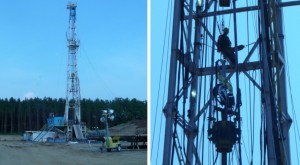Pump CO2 into the earth to create electricity? Berkeley Lab is on it


The diagram at the end of post shows the different elements of the technology that they are developing, which could eventually be proved out in Cranfield, Mississippi, with $5 million in funding from the U.S. Department of Energy. Here is how it is supposed to work:
- Carbon dioxide emissions are injected down three kilometers (1.86 miles) into the earth's sediment, where the temperature is 125 degrees Celsius (257 degrees Fahrenheit). At that depth and heat, CO2 reaches a "supercritical" state in which it becomes both gas and liquid.
- The heated CO2 is pulled back up to the surface and fed into a turbine that converts some of the liquid and gas properties of the CO2 into electricity.
- Repeat to keep the turbines spinning.
- Eventually, some of the CO2 will be trapped in the sediment.
Realistically, the power created by this technology would probably be mainly used to keep carbon storage facilities sustainable through site-generated electricity from a "renewable" source. Right now, one of the biggest things in the way of sequestration is the expense of pumping the stuff underground.
Another potential benefit is that the technology could help reduce the amount of water that is needed for geothermal energy projects, if CO2 is proven to be a better means of mining heat from deep within the earth. One challenge with using water for geothermal energy is that between 10 percent and 20 percent can be lost during the process.
On the Web site describing the project, Berkeley Lab mechanical engineer Barry Freifeld said:
"Carbon storage takes a lot power -- large pumps and compressors are needed. We may be able to bring down its costs by generating electricity on the side."
The test site in Mississippi is affiliated with the Southeast Regional Carbon Sequestration Partnership, where there has been DOE-funded carbon sequestration work going on for two years. In the first phase, Echogen Power Systems of Ohio will work on designing a turbine that can handle the CO2; the University of Texas at Austin will explore the potential environmental impact of the process using simulations. Phase two would see the turbine built and tested and eventually used for a pilot run.